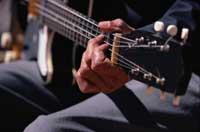Heartbeat
Rest a little and applaud without thinking about anything. Through this experience, researchers have found that we all applaud at a similar pace. But how can there be so much synchronization? It seems that the internal rhythm is responsible for it, but also for the capacity of the human being to perceive the continuity of time.
Applauding without thinking of anything, he gives us a applause of 600 milliseconds, that is, almost two applause per second. According to some researchers, internal rhythm drives us to this. But it is necessary not only to make music, but also to coordinate the mind and body and perceive the continuity of time. Therefore, researchers also dare to say that this rhythm is the essence of their existence.

Carolyn Drake, of the CNRS (National Center for Scientific Research), is one of the experts in internal human rhythm. His statements are based on studies conducted over long years with adults and children. In his opinion, "the pace of walking of people, the heartbeat and the rhythm of catching the child's chest are on the same scale." In the absence of an external gesture, all activities tend to follow the same pace and it is surprising to see the compatibility of people.
Another expert in these rhythms is Daniel Levitin, from the University of Montreal. For him, "we are all able to accurately follow the rhythms." Levitin asked some people to sing a song they listened to and knew well in a single version and showed that everyone has a very good rhythm. It is difficult to explain if an internal driving metronome is not available! Oh, and whoever says he has no rhythm for dance and music, henceforth he has no excuses, just listen to the heartbeat!
The inner rhythm, basis for understanding the world
But, as we have said, the inner rhythm does not only serve to sing well. Reiss Jones and Drake believe that the world is sorry in the pulsations. Just as hearing and sight are based on contrast, it is easier to pay attention to things that change. This happens with the perception of time. For Drake, we review the world twice a second to know if what we see or hear has changed. This filters out the external information that otherwise drowned us. In addition, they believe that internal pulsations mark outer time. "Otherwise, it would not be possible to detect that one event comes from another." Without our own rhythm we would lose ourselves in a world where everything happened at once.

However, Drake states that the internal rhythm is altered with age. That has been at least the result of research with children and young people aged 4 to 20. Drake hit two different rhythms and asked the public to identify the two slower. The children responded more precisely when the distance between pulses was about 400 milliseconds and those over 600 milliseconds. According to Drak, "adults accumulate more information at all times, such as driving. That's why, to give the brain enough time to understand information, they slow the pace of pulsation and review the environment less frequently."
However, when necessary, we can change the frequency of pulsation. Many things happen on a smaller or larger scale in time, so you have to adjust the internal rhythm.
Physicist Albert-László Barabási analyzed the audience's applause after a show. Although he rarely discovered that public applause is synchronized to half the average frequency of all applause. This tendency to synchronization also appears when walking or dancing.
There are also those who say that we use rhythm to learn languages. Frank Ramus took phrases from different languages and replaced all syllables with the "sa" sound. Then, keeping pace with the mother tongue, he asked everyone to pronounce the phrase. Two-month-old children listening to this exercise were able to identify the rhythm of their mother tongue. According to Ramus, "sensitivity to rhythm develops in children's brain to learn the language."
What part of the brain is activated?
All researchers agree that rhythm has its place in the brain, but it is not yet clear where. According to some researchers, two parts of the brain respond to the rhythm, one part that helps coordinate movements and another that is activated by detecting and talking space.

For Scott Kelso, for his part, linking rhythm only to two parts of the brain is simplifying many problems. "In different situations, parts of the brain can express different rhythmic behaviors." Kelso investigated the part of the brain that is activated along with the pulsations of a metronome and asking to applaud between the pulsations of the metronome and observed that in the second exercise, being more complicated, more parts of the brain are activated.
However, activating a part or several parts of the brain, what is clear is that we all have internal rhythm and, therefore, when we listen to music, we all have the desire to dance. Is it not?
Published in 7K
Buletina
Bidali zure helbide elektronikoa eta jaso asteroko buletina zure sarrera-ontzian











